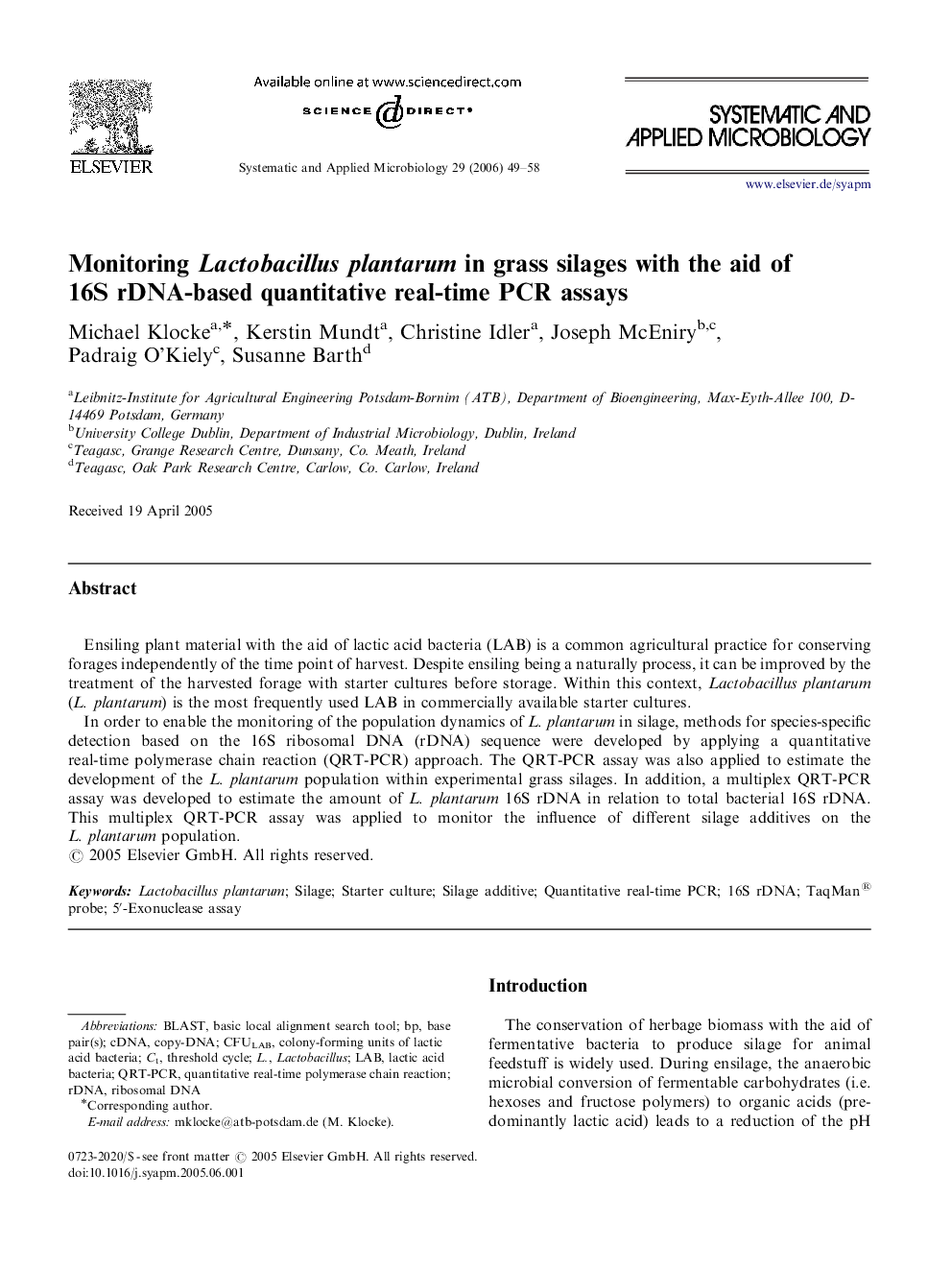| Article ID | Journal | Published Year | Pages | File Type |
|---|---|---|---|---|
| 2063610 | Systematic and Applied Microbiology | 2006 | 10 Pages |
Ensiling plant material with the aid of lactic acid bacteria (LAB) is a common agricultural practice for conserving forages independently of the time point of harvest. Despite ensiling being a naturally process, it can be improved by the treatment of the harvested forage with starter cultures before storage. Within this context, Lactobacillus plantarum (L. plantarum) is the most frequently used LAB in commercially available starter cultures.In order to enable the monitoring of the population dynamics of L. plantarum in silage, methods for species-specific detection based on the 16S ribosomal DNA (rDNA) sequence were developed by applying a quantitative real-time polymerase chain reaction (QRT-PCR) approach. The QRT-PCR assay was also applied to estimate the development of the L. plantarum population within experimental grass silages. In addition, a multiplex QRT-PCR assay was developed to estimate the amount of L. plantarum 16S rDNA in relation to total bacterial 16S rDNA. This multiplex QRT-PCR assay was applied to monitor the influence of different silage additives on the L. plantarum population.
